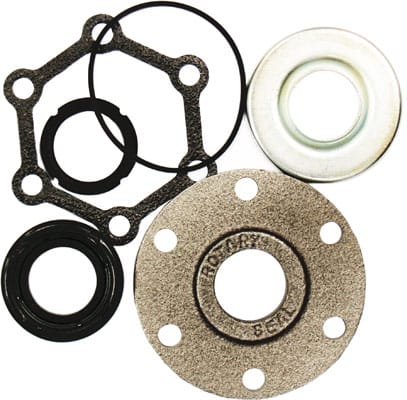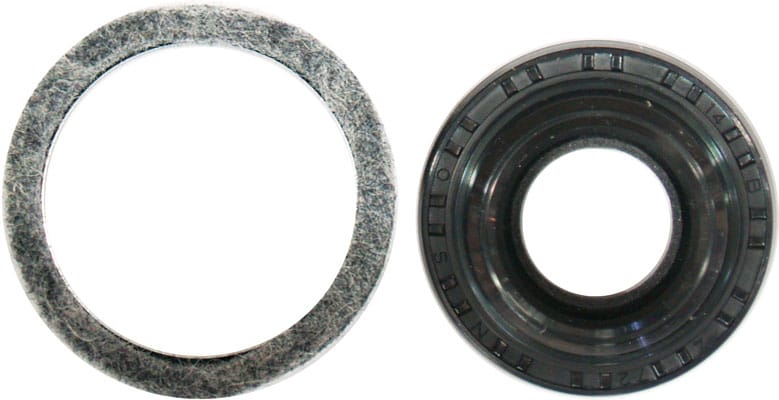Compressors require some way of allowing a shaft to turn in the compressor and still be able to stop Refrigerant leakage. To accomplish this Automotive Air-Conditioner Compressors require a seal behind the front hub assembly regardless of whether there is there is a magnetic clutch to disengage the compressor or if it is a constant drive type compressor.
To accomplish this Automotive Air-Conditioner Compressors require a seal behind the front hub assembly regardless of whether there is there is a magnetic clutch to disengage the compressor or if it is a constant drive type compressor.
Early Compressor seals were a two-part seal where a ceramic disc with an internal O ring that sealed the disc to the shaft, ran against a finely machined metal disc situated in the front hosing of the compressor. Oil in-between these surfaces both lubricates and provides part of the sealing ability of the seal. This type of seal will leak refrigerant if allowed to dry out which is why it is recommended to always use an Air-Conditioner at least monthly to allow oil movement which assists sealing. It was not unheard of for this type of compressor seal to leak initially before the compressor is first operated with refrigerant in the system and then seal after running.
A08-8027
Later Model Compressors for example Sanden, now have O Ring seals which run on the front shaft. These seals also will allow a small amount of oil past them as per the ceramic type seals as part of the lubrication and sealing process so it is quite normal to see some oil behind the front hub. What does damage compressors is when they are operated in very dusty conditions without a dust cover and dust combining with this oil creates a grinding paste that causes wear on the front shaft where the seal runs. Replacing a seal in this situation will not stop refrigerant leakage due to insufficient pressure of the O ring onto the worn shaft.

A08-8131


